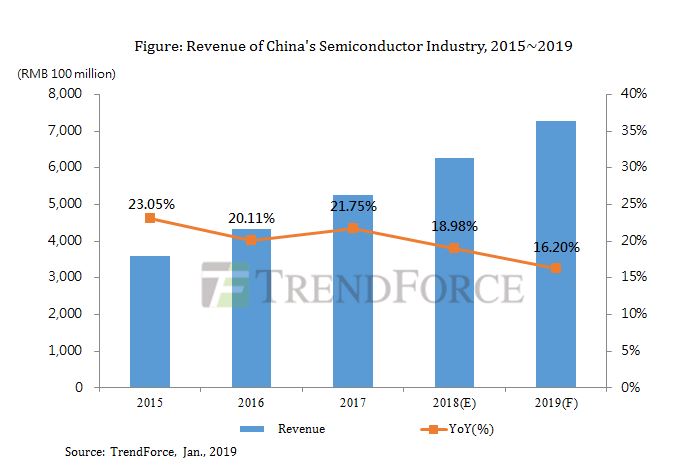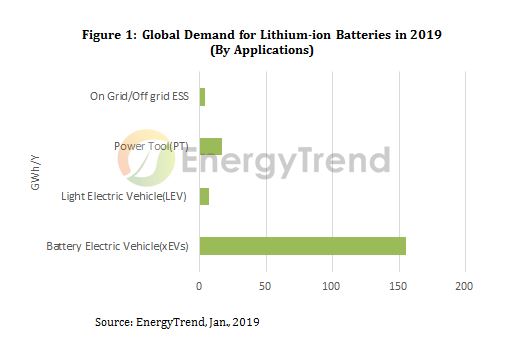- Ameya360 Component Supply Platform >
- Trade news >
- Panel's Glut Ratio Might Peak at 4.3% in 4Q18; Panel Price Trend Might Be Reversed
Panel's Glut Ratio Might Peak at 4.3% in 4Q18; Panel Price Trend Might Be Reversed
WitsView, a division of TrendForce, reports that the large-sized panels witnessed slashed demand in the first quarter with decreased panel shipment by area, but the oversupply was eased in 2Q18 as the demand recovered and the supply (glass output by area) dropped. In the third quarter, the enhanced stocking-up demand in a peak season has reversed the over-supply trend. However, WitsView reports higher risks of panel price decline in 4Q18, for the end demand may gradually slide in the upcoming quarter while panel makers keep on targeting full utilization rates.

Iris Hu, a research manager of WitsView, points out that monitor panel's demand grew from the second quarter because brands expanded their product lines of the borderless and the gaming (e-sports). Regarding laptop panels, brands steadily had their orders be fulfilled ahead of time due to the tight supply of driver ICs. As for TV panels, panel makers offered special deal price to stimulate rising demand. On a whole, in the second quarter, panel demand by area was larger than previous prediction. On the supply end, panel supply by area was smaller than expected because of two reasons below. First, Samsung Display (SDC) conducted annual maintenance for its Fab L7-2 and L8 in April. Next, BOE's Gen. 10.5 fab began to slow down input momentum in the mid second quarter. Thus, panel supply by area in second quarter was smaller than expected. Reasons above made panel glut ratio considerably shrink from previous prediction (7.4%) to 3.5% in the second quarter.
Decrease in demand might lead panel's glut ratio to peak at 4.3% in 4Q18
In the third quarter, the peak season is time for promotional campaigns. All application categories' stocking-up momentum has been strengthened. Panel demand by area is estimated to rise 10.6% QoQ. In particular, monitor brands continue increasing their demand for borderless and gaming (e-sports) products. For laptop brands, their launches of new products have been delayed due to tight supply of driver IC and postponed delivery of Intel CPU. However, because of the traditional peak season, laptop panel's stocking-up demand is still expected to reach a certain extent. When it comes to TV panel demand, because of rising stocking-up momentum in the peak season and increasing panel price in July, brands became more aggressive to procure. In terms of supply, BOE and CEC Group's three new fabs proactively expand their capacities. Hence, in the third quarter, supply by area rise by 5.2% QoQ. Since the total demand grows faster than the total supply, in the third quarter, glut ratio shrinks to negative 1.6%.
A fourth quarter is a duration of year-end inventory control. In 4Q17, because of promotional campaigns on November 11 and the holiday season at the year-end of Europe and USA, demand in 4Q17 was lasted from 3Q17. In contrast, in 4Q18, panel demand of the top four application categories is predicted to gradually drop, considering the strong procurement momentum from 1Q18 to 3Q18. This is an indirect reason why demand by area is expected to decline 3.5% QoQ. By contrast, on the supply end, three new fabs in China will continue to move toward their full-utilization-rate BPs for the year 2018, in order to get governmental subsidies. Thus, supply by area might grow 2.3% QoQ in 4Q18. The glut ratio in the fourth quarter, thus, will enlarge to 4.3%, and further lead to a possible reverse in panel price trend.
WitsView points out, this year on the supply end, BOE and three new fabs in the CEC Group have reached mass production phases. Another four of the industry's existing fabs are still expanding capacities. (One of them is AUO's Gen. 8.5 fab in Houli. Other three fabs are from Chinese panel makers.) In 2018, panel supply by area is predicted to grow by 7.4%, reaching 201.5 million square meters. This is the year whose growth rate is highest since the year 2013.
On the demand side, in 2018, FIFA World Cup raised the demand of TV panels. Besides, products' specification upgrades and the rising e-sports demand increased the demand for PC panels. Moreover, in the first half of 2018, panel makers offered friendly prices for panels. Due to the above reasons, large-sized panel demand by area for 2018 will grow 8.6% YoY, coming to 196.9 million square meters. In this way, the annual glut ratio will shrink from previous prediction (5.5%) to 2.4%.
Online messageinquiry

Revenue Growth in China's Semiconductor Industry Would Slow Down to 16.2% in 2019 due to Pessimistic
- Week of hot material
- Material in short supply seckilling
| model | brand | Quote |
|---|---|---|
| BD71847AMWV-E2 | ROHM Semiconductor | |
| CDZVT2R20B | ROHM Semiconductor | |
| RB751G-40T2R | ROHM Semiconductor | |
| MC33074DR2G | onsemi | |
| TL431ACLPR | Texas Instruments |
| model | brand | To snap up |
|---|---|---|
| BP3621 | ROHM Semiconductor | |
| IPZ40N04S5L4R8ATMA1 | Infineon Technologies | |
| TPS63050YFFR | Texas Instruments | |
| STM32F429IGT6 | STMicroelectronics | |
| ESR03EZPJ151 | ROHM Semiconductor | |
| BU33JA2MNVX-CTL | ROHM Semiconductor |
- Week of ranking
- Month ranking
Qr code of ameya360 official account
Identify TWO-DIMENSIONAL code, you can pay attention to


Please enter the verification code in the image below:

























